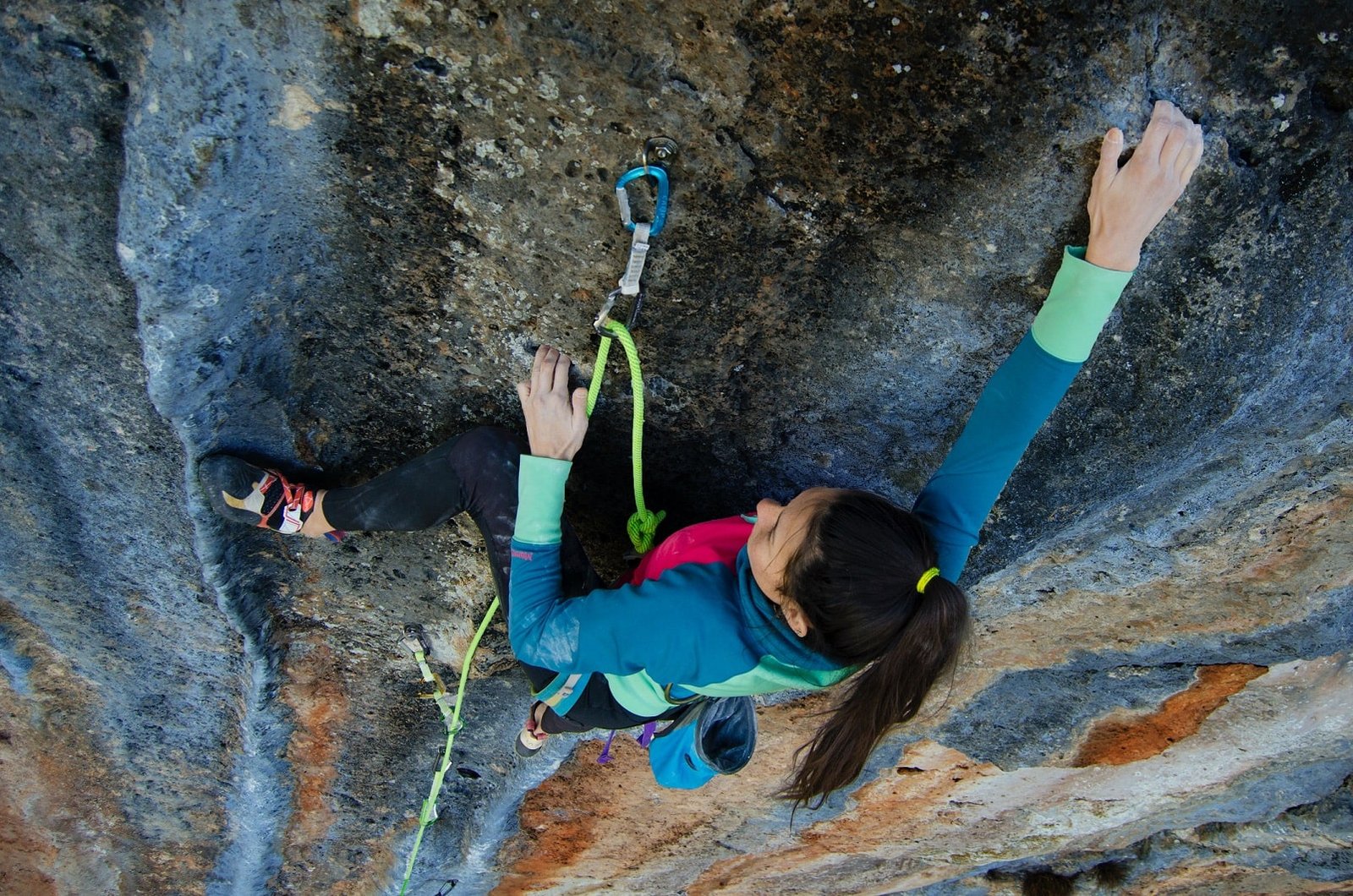Lumbrical Muscle tears are best healed by starting stretching of the muscle early. Then, a proper loading program will ensure that you force your body to heal and adapt to your desired level. This desired level is your climbing grade and intensity before your lumbrical injury.
Before I explain how to heal from a lumbrical injury though, I show how the muscle works and what it looks like anatomically. And most importantly, at the end of this article, I discuss the best technique for rock climbers to reduce the chance of a lumbrical injury.
Are you ready to dive in?
Let’s go.
1. Anatomy of The Lumbrical Muscles
The lumbrical muscles are muscles that are part of the meat in your hand palm. Interestingly, the lumbrical muscles don’t originate from a bony structure, but from the tendons of the flexor digitorum profundus muscle. This muscle is responsible for bending your hand and fingers.
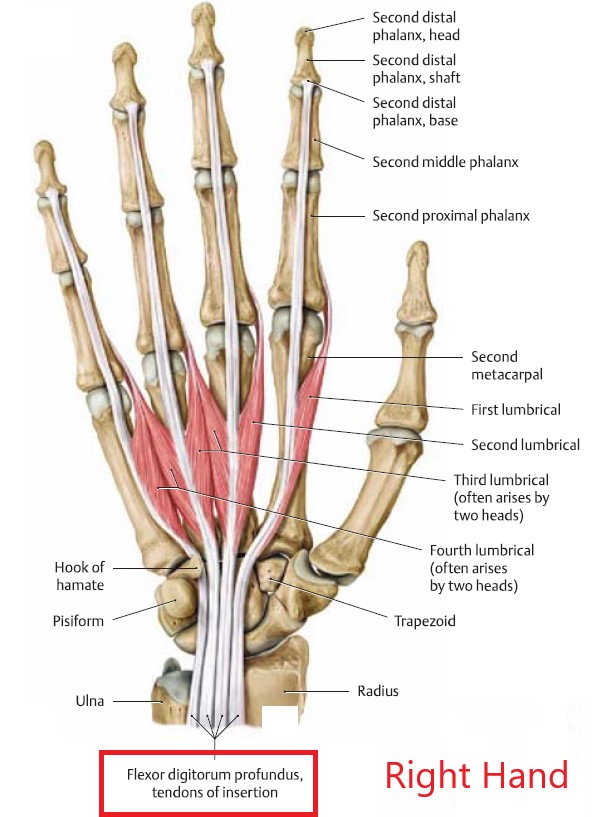
The “musculus lumbricalis” (Latin name) itself flexes the fingers at the MCP joints (the joints between your hand and the base of your fingers) and extends at the proximal interphalangeal joints (PIP) and the distal interphalangeal joints (DIP) of all your fingers except your thumb. The reason for the opposing function of the muscle has to do with the way the muscle fibers run around your fingers.
Bear with me now, I know this is a bit technical. But it’s essential for understanding how you injure your lumbricals while rock climbing.
The lumbrical muscles originate at the flexor digitorum tendons in the palm of your hand but attach to the backside of your fingers. Thus, the lumbricalis tendons are wrapped around your fingers from the front to the back causing the opposing function.
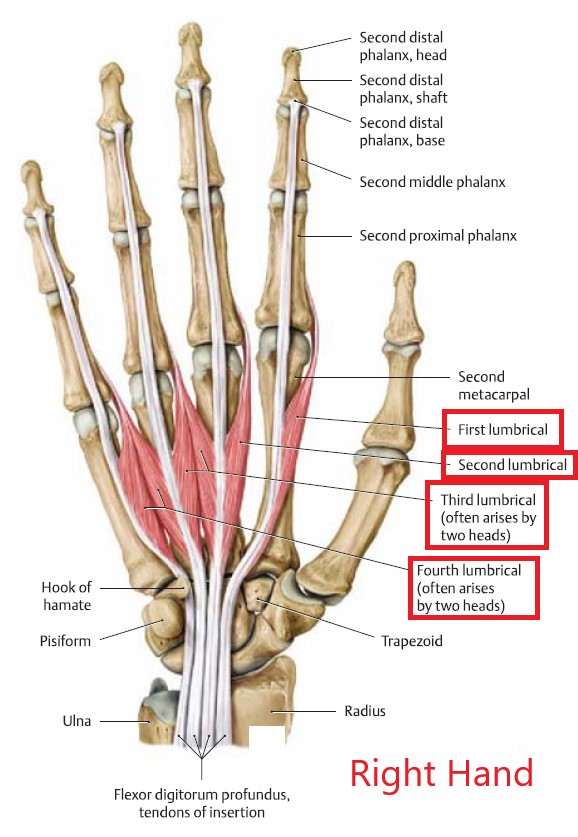
Now, let’s move on to the most important part of the lumbrical’s anatomy for rock climbing.
The lumbricalis muscle consists of 4 parts, each attaching to a tendon of the flexor digitorum profundus. And each of these parts is attached to your index finger all the way through to your pinky finger. This means that you’re able to use each part of the muscle separately by bending one finger while extending the others. Like, when you’re climbing on one or two-finger pockets for example.
So, it’s amazing we have this separate control over fingers, unlike frogs, for example, it does make the lumbricalis prone to injury when climbing on pockets.
2. How does a Lumbrical Muscle Tear Happen?
The lumbricalis muscles tear when you put high force on part of your fingers in relative extension while you flex the other fingers hard.
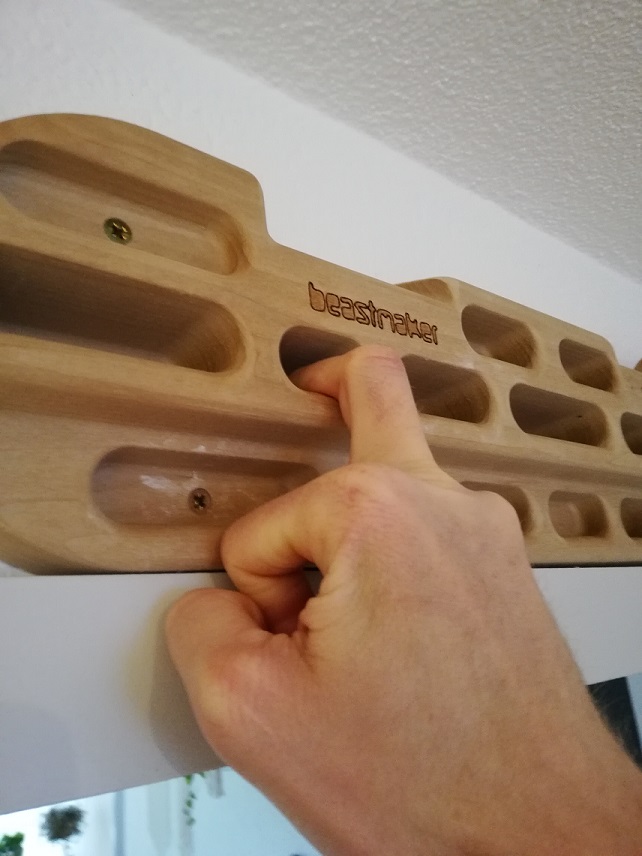
Since the lumbricalis is connected to all the fingers, flexing one finger while extending the other puts a large strain on the muscle.
You run the highest chance of hurting the lumbrical muscles in a 1-finger, or 2-finger pocket. A 3-finger pocket is less likely, and in a 4-finger pocket, it’s impossible because all parts of the lumbricals are aligned the same way.
3. How do you Know if You Have a Lumbrical Injury?
You know you have injured your lumbrical muscle If you were climbing on pockets or similar holds, felt a sudden pain while pulling on your fingers, and if you can reproduce your pain by extending 1 or 2 fingers while flexing the others. If you don’t feel any pain at all and have a significant loss of function (it’s hard to produce movements the lumbricals are responsible for) be sure to talk to a specialist immediately. In this case, the entire muscle might be torn.
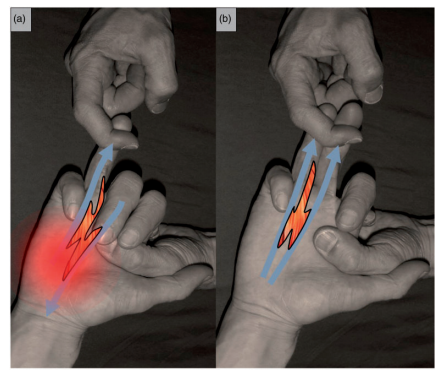
A lumbrical muscle tear is a muscle tear like any other and can be graded into 4 levels:
- Muscle is injured but no fibers are torn
- Some muscle fibers are torn
- An entire muscle bundle is torn
- The entire muscle is torn
In case numbers 0, 1, and 2 conservative rehabilitation is the best way to go. If the entire muscle is torn surgery can be an option.
4. What is the Best Way to heal a Lumbrical Injury?
The best way to heal a lumbrical injury is by starting to stretch lightly a couple of days after you injured the muscle. Then progressively increase the intensity of the stretch until after 2-6 weeks, depending on the severity of your injury, you can start loading the muscles with strength exercises and climbing-specific movements again.
4.1 How to do Buddy Taping for a Light Lumbrical Injury?
If you just have a light lumbrical injury you might be able to continue climbing by buddy taping your fingers. Here’s how to buddy tape your fingers:
- Wrap a piece of tape around the base of your injured finger, and an adjacent healthy finger
- Wrap a piece of tape around the middle phalanx of your injured finger, and the same adjacent health finger
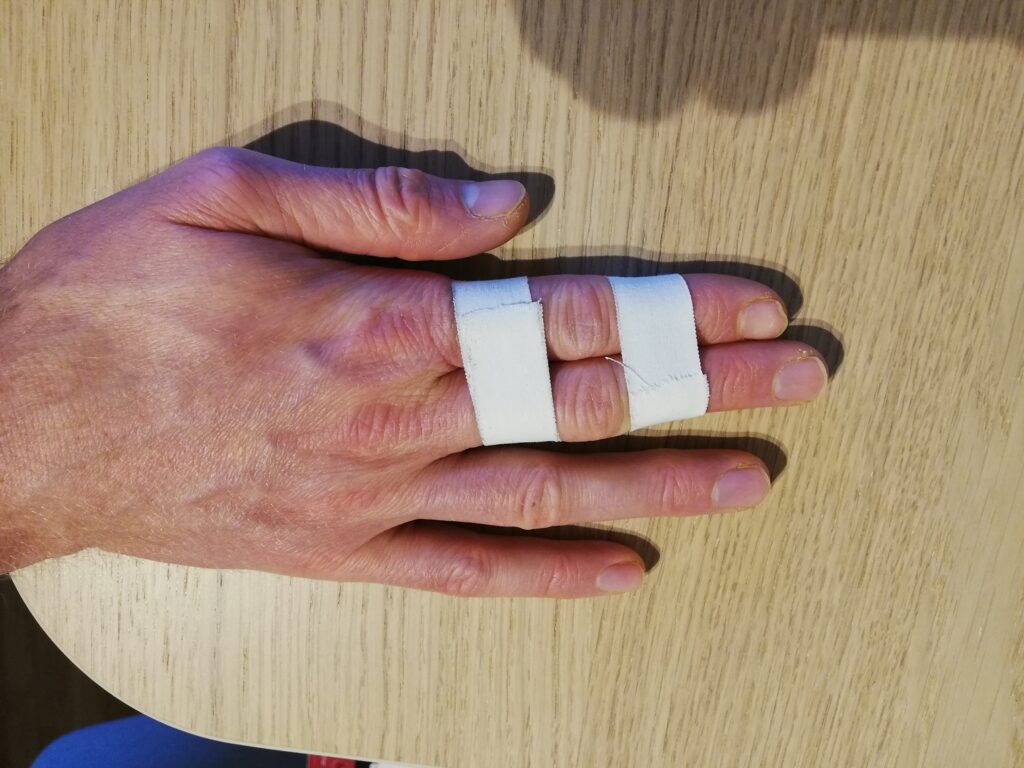
Now, let’s have a closer look at an effective way to heal a grade 1-3 lumbrical tear.
4.2 How to Heal a Grade 0-2 Lumbrical Muscle Tear?
Before you start the rehab program described below, be sure to confirm your lumbrical tear by talking to a licensed healthcare professional.
You’re sure you injured your lumbrical muscle(s)?
Here’s how to heal them efficiently:
- Day 1-3: complete rest
- Day 4: start stretching and passive range of motion
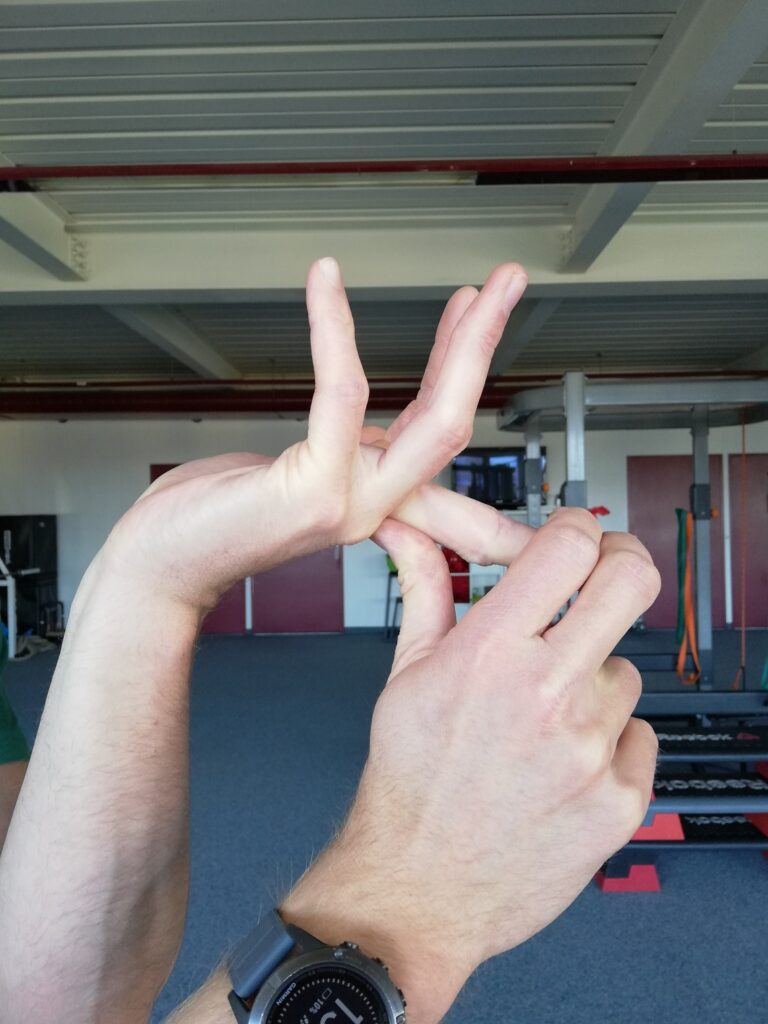
- Day 14: start active range of motion and intensify stretching
- Day 21: intensify stretching and start loading the lumbrical muscles isometrically
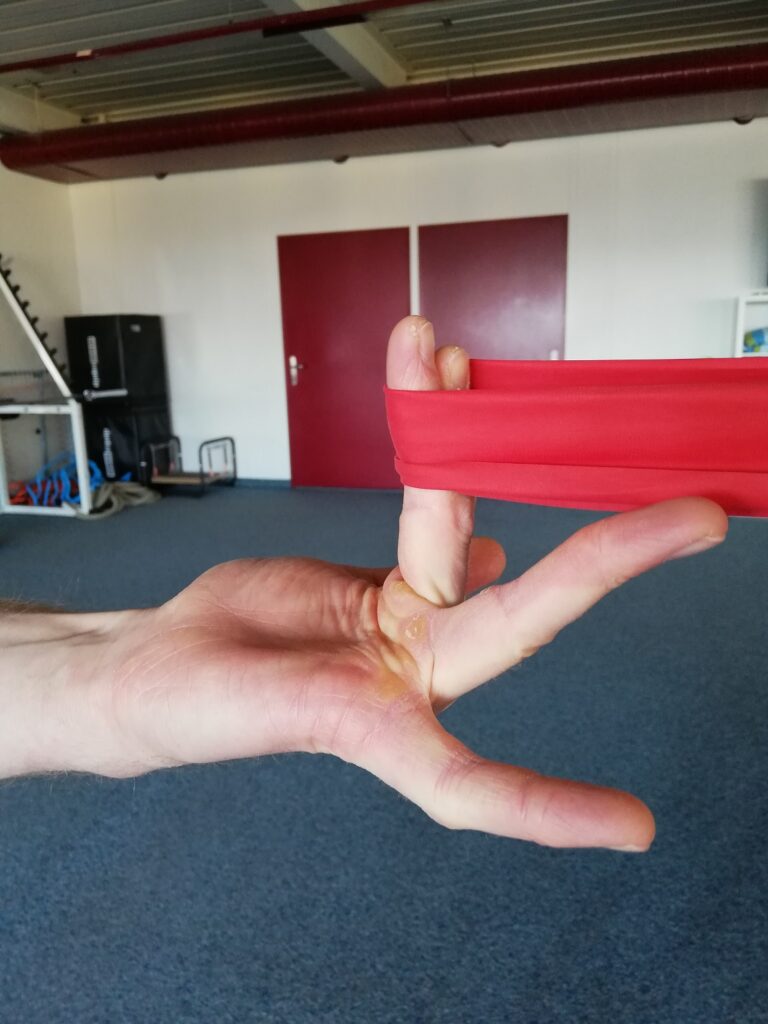
Continue increasing lumbrical load according to pain levels. A pain of up to 4-5/10 is allowed during exercise as long as it reduces right after you stop exercising. You should never experience increased pain levels after your wake up the day after training. That would be a sign you worked out too hard.
These are the steps you can progress with based on your pain levels:
- Start doing eccentric strength training for the lumbricals
- Start doing concentric strength training for the lumbrical muscles
- Start climbing on big holds
- Initiate hang boarding (if it was part of your training before injury)
- At least 3 months after injury and when you’re absolutely pain-free in all other activities: start climbing on crimps and pockets
4. How to Reduce the Risk of Lumbrical Injuries while Rock Climbing?
The best way to reduce the risk of a lumbrical injury is by climbing less on pockets, or if you do, to not bend the fingers that are not holding on to the pocket.
So, you try to keep the fingers that are not in a pocket held in the same position as the fingers that are in there.
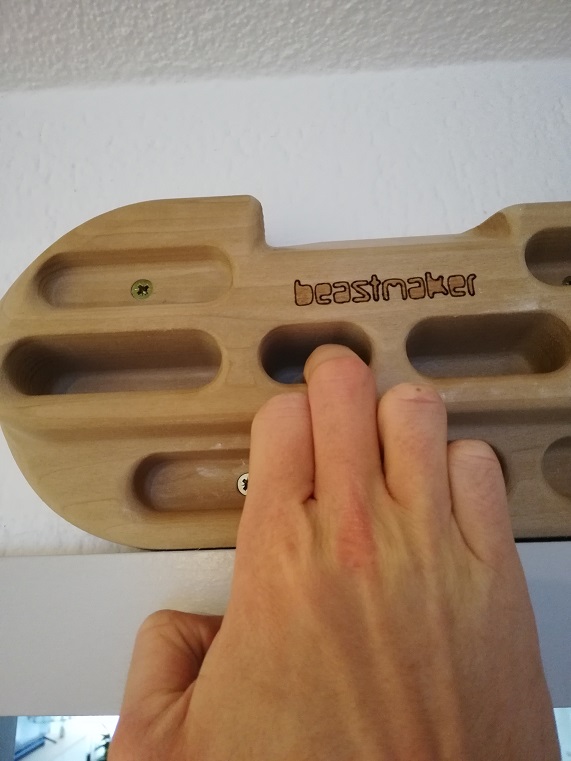
If you use this strategy climbing pockets you reduce the strain on your lumbrical muscles. However, you might not be able to generate as much force. This in turn increases the chance that you flex the free fingers anyway. That’s why it’s a great idea to practice this technique by climbing easy routes with deep pockets. Do this often, and it’ll become automatic, also when you’re climbing fingertip mono’s.
5. Important Take-Aways
If you should remember one thing from this article it is how to prevent lumbrical muscle tears by climbing properly on pockets.
Take time to practice the technique and be careful on pockets in general. Because not only your lumbricals are strained intensely. Also, your annular ligaments (pulleys) and finger flexors have to work hard.
